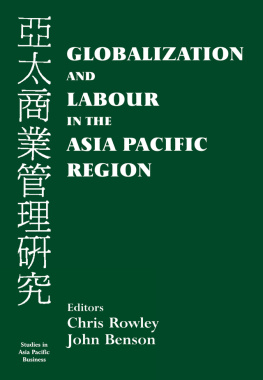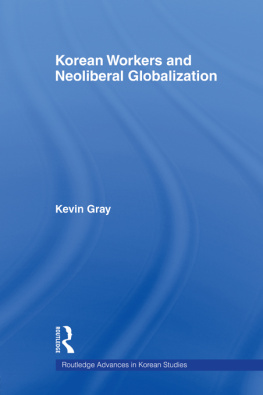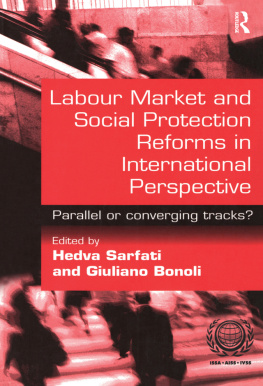First published 2014
by Routledge
2 Park Square, Milton Park, Abingdon, Oxon OX14 4RN
and by Routledge
711 Third Avenue, New York, NY 10017
Routledge is an imprint of the Taylor & Francis Group, an informa business
2014 Hiroaki Richard Watanabe
The right of Hiroaki Richard Watanabe to be identified as author of this work has been asserted by him in accordance with sections 77 and 78 of the Copyright, Designs and Patents Act 1988.
All rights reserved. No part of this book may be reprinted or reproduced or utilised in any form or by any electronic, mechanical, or other means, now known or hereafter invented, including photocopying and recording, or in any information storage or retrieval system, without permission in writing from the publishers.
Trademark notice: Product or corporate names may be trademarks or registered trademarks, and are used only for identification and explanation without intent to infringe.
British Library Cataloguing in Publication Data
A catalogue record for this book is available from the British Library
Library of Congress Cataloging in Publication Data
Watanabe, Hiroaki, 1968
Labour market deregulation in Japan and Italy : worker protection
under neoliberal globalisation / Hiroaki Richard Watanabe.
pages cm.(Nissan Institute/Routledge Japanese studies)
Includes bibliographical references and index.
1. Manpower policyJapan. 2. Manpower policyItaly. 3. NeoliberalismJapan.
4. NeoliberalismItaly. 5. GlobalizationJapan. 6. GlobalizationItaly. I. Title.
HD5713.6.J3W38 2014
331.12'0420945dc23 2014021063
ISBN: 978-1-138-02396-3 (hbk)
ISBN: 978-1-315-77616-3 (ebk)
Typeset in Times New Roman
by codeMantra
Contents
A number of previous writers have noticed parallels between the political economies of Japan and Italy. Examples are Richard Samuels book Machiavellis Children, on comparative political leadership, and also the work of Sidney Tarrow. Both countries, as some wit pointed out, are long and thin with their capitals halfway down their respective coastlines. More seriously, however, both Italy and Japan were on the wrong side in the Second World War and, with some help from the victors, restructured their systems after the war. In political terms, both became democratic countries ruled from the 1950s for several decades by a single right-of-centre political party Christian Democrats in Italy, Liberal Democrats in Japan. Both of those parties were notoriously subject to factional division, prone to favouring special interests and to imposing large-scale regulation on parts of the economy and society. Both countries contained major left-wing opposition parties that were difficult to admit into government, at least so long as the Cold War persisted. Another, and more sinister parallel between the two countries, is their criminal underworld, for the Japanese yakuza have often been compared with the Italian Mafia. Lastly, taking a broader sweep, both Italy and Japan were, in Ronald Dores words, late developing countries, beginning their modernising trajectories in the late nineteenth century.
On the other hand, there were contrasts as well. The political and social differences between various regions of Japan were, though not negligible, much less than those between the north and south of Italy. Whereas in the post-war decades the Japanese government bureaucracy often dominated policy-making, in Italy civil servants were much less powerful and competent. Moreover, since the end of the Cold War, their systems of political economy have to a marked extent diverged, though both have recently exhibited considerable political instability. In Italy, the Christian Democratic Party disintegrated, whereas the Japanese Liberal Democratic Party achieved a new lease of life at general elections in December 2012.
Hiroaki Watanabe, author of the present volume, compares labour market deregulation in the two countries since the 1990s and writes in the tradition of comparative political economy. On the basis of meticulous research, using material in Japanese, Italian and English, he takes issue with the widely cited Varieties of Capitalism literature, which he regards as too static and not sufficiently capable of accounting for change over time. He also criticises this school for over-emphasising regular forms of employment and neglecting casual and part-time labour. The approach that he favours is Varieties of Liberalisation. What he is saying, in other words, is that the effects of globalisation, and in particular neoliberal policies implemented by government, have radically altered both the Japanese and the Italian labour markets. To this argument he adds a complementary approach, the power resources model, according to which the comparative strength of labour and management significantly affects the end result.
He shows that neoliberal reforms began to be implemented in contrasting environments in the two countries. In Japan the predominant form of labour organisation was the enterprise union, which sometimes facilitated cross-class arrangements between management and labour. By contrast in Italy, a tradition of industrial unionism prevailed, so that the aspect of class conflict was much stronger. This meant that conservative governments in Japan, intent upon radical deregulation, (especially by maximising casual and non-regular labour flexibility), faced a rather weak labour movement (being made even weaker through the imposition of neoliberal policies), whereas in Italy traditions of working class solidarity provided a more robust, though not impregnable, bulwark against the erosion of workers rights.
The Nissan Institute/Routledge Japanese Studies series began in 1986 and is approaching its hundredth volume. The principal aim of the series is to introduce readers to different aspects of Japan (especially but not exclusively in the social sciences), paying special attention to processes whereby Japan endowed with the third largest economy in the world is changing and adapting to newly emerging international conditions.
Arthur Stockwin
Roger Goodman
This book is based on my doctoral research at the University of Oxford and has been improved since then with new insights. It was October 2004 when I started my PhD, so it took ten years for my doctoral dissertation to be published in the form of a book.
I originally did not have any intention to become an academic. After I graduated from the University of Tokyo, I entered the business world as many of my university friends did. I worked for a large multinational trading company and engaged in international legal affairs, especially those in East Asia and Europe.
However, I moved to academia some years later when I decided not to pursue a career as a lawyer in the United States. I was always interested in the dynamic world of politics (even if it is often pathetic), and journalism was a job which was in my mind, if not seriously. Considering a busy and tough life as a journalist, however, I just decided to begin my graduate study without much knowledge of academia. My real-world experience, however, proved to be useful for conducting research later. It helped me that I was actually able to observe how Japanese people work in a multinational company on a daily basis for several years and knew the working conditions of a number of other companies through numerous communications with my acquaintances. I ended up having three Master degrees eventually, and although they may not be as useful as a PhD, this is still something that distinguishes me from other scholars. I was able to enjoy my Masters studies in three different countries Japan, the United Kingdom, and the United States and even after I started my PhD, I enjoyed my academic and nonacademic life overall, even though things were a bit tough sometimes.









